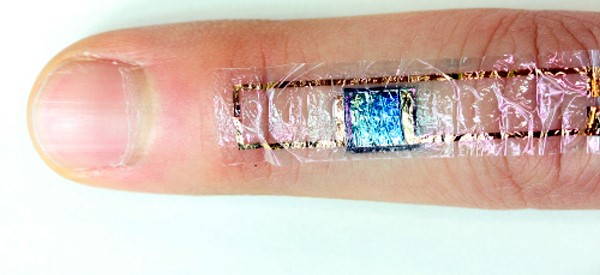
One of the challenges for wearable devices is getting power to them. You can include a battery, but this will need to be recharged or replaced when it runs down. Researchers have explored harvesting energy from sources including body heat, motion, and ambient radio waves. Each of these have their advantages and disadvantages, but what if you could harness the same energy source used by plants?
Scientists at RIKEN in Japan have been working on organic solar cells that are thin and flexible enough that they could be attached to a person’s skin. What’s more, they have incorporated a sensor capable of detecting the person’s heartbeats. The structures are fabricated on a 1 micron substrate. The solar cells include nano-gratings that serve to concentrate the light and improve the solar cell’s conversion efficiency. The researchers were able to get more than 10% of the energy in the light and generated more than 11 watts per gram. The result is a lightweight and thin device that can provide power to biosensors. According to the researchers, “the device worked well at a lighting level of 10,000 lux, which is equivalent to the light seen when one is in the shade on a clear sunny day.”
Note that indoor light levels typically range from 1,000 down to 25 lux, which means that considerably less light energy is available. Furthermore, the device has to be exposed to the light which means that it cannot be covered by clothing. As the RIKEN researchers point out, a flexible power storage system needs to be added to provide power when the light is not available to power the device.
There’s a lot more work required before this will be a practical solution, but it does represent an important step that could be incorporated with other energy harvesting strategies to create a robust source of power for wearable devices.

